Do you know Brazilian coffee beans? what is Brazilian half-sun? Introduction to the characteristics of Brazilian coffee beans
Professional coffee knowledge exchange more coffee bean information please follow the coffee workshop (Wechat official account cafe_style)
Brazil, as the largest coffee producer, is deeply loved by coffee lovers for its mellow and low-acid flavor. Among the Brazilian coffee beans on the front street coffee list, in addition to the Queens Manor coffee beans from a single producing area, the price-to-performance king's former street rations bean series has also been added to Brazil. In order to facilitate lovers to brew, Brazilian coffee can also be found in the season's hanging-ear coffee series, which shows that Brazil, as a coffee producer, is indispensable in the classic coffee flavor.
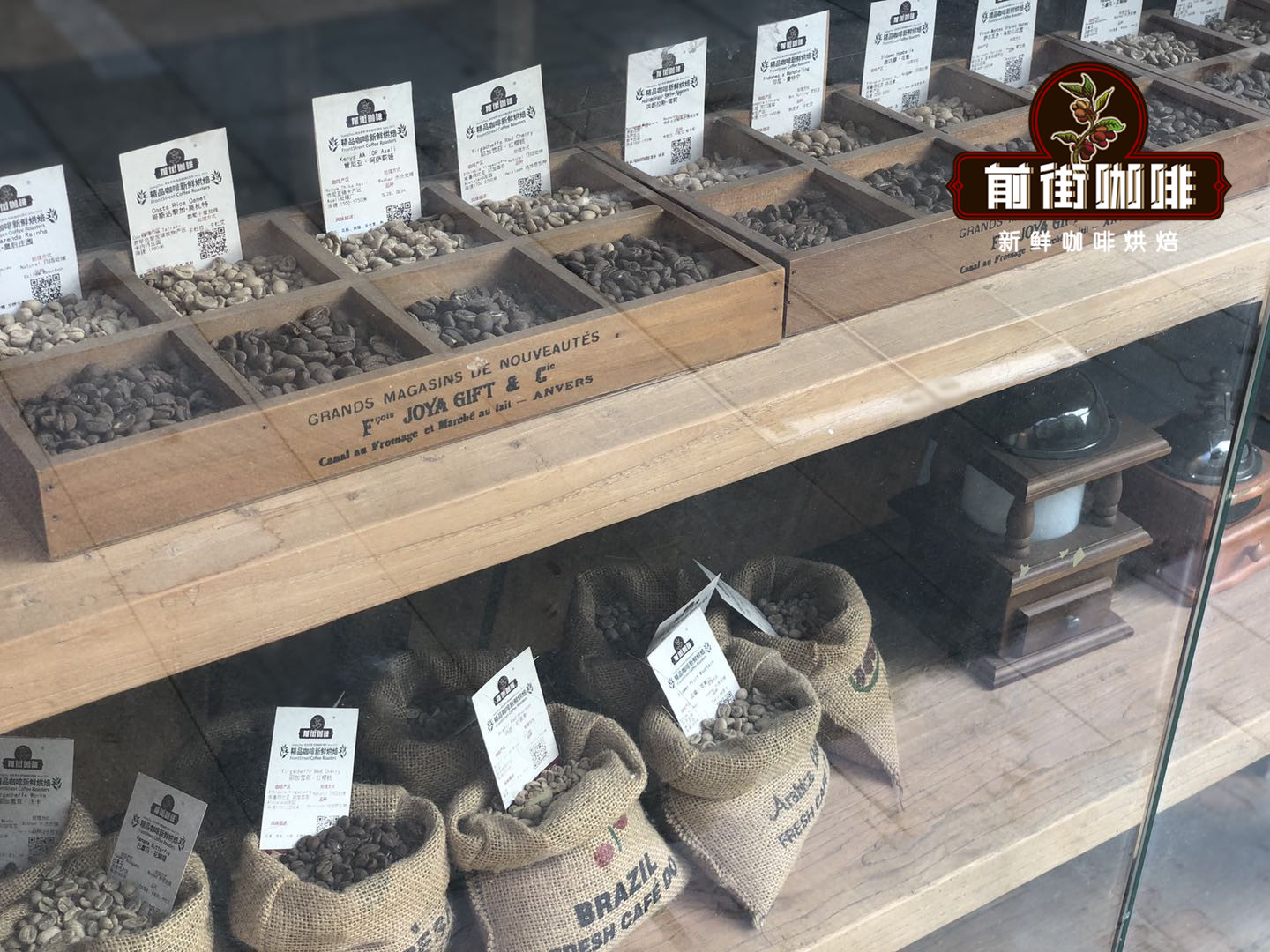
Brazilian coffee was introduced from French Guiana in 1729. It is true that intensive farming and changing treatment methods and improving the technical content of cultivation can improve the quality of coffee to some extent, but the natural conditions of Brazil cannot in any way be compared with those that produce some of the world's top coffees. because although Brazil has better soil conditions and a humid climate, it is not high above sea level. However, there are also some world-famous items, Brazil Bourbon Santos is one of them. The Brazilian Bourbon Santos has no particular advantages, but there are no obvious drawbacks. This coffee has a mild and smooth taste, low acidity, moderate mellow and a touch of sweetness. All these soft flavors are mixed together, and to distinguish them one by one is a test of taste buds, which is why many Bourbon Santos fans love this kind of coffee. It is precisely because they are so gentle and ordinary that bourbon Santos is suitable for ordinary baking, suitable for maximum brewing, and is the best raw material for making espresso and all kinds of fancy coffee.
The latest Brazilian coffee
Influence of epidemic situation
The title of number one coffee production has brought considerable economic income to Brazil, but it is also very large in terms of manpower demand. Brazil was the last country in the Western Hemisphere to abolish slavery at that time. It is because it takes a lot of manpower to grow and pick coffee. Now affected by the novel coronavirus epidemic, Brazil is worried that the epidemic will break out seriously with the arrival of the coffee picking season, thus delaying coffee exports, so it is expected that this year's Brazilian coffee harvest will be delayed.
The benefits of shade trees
As a result of global warming, coffee-growing areas in Brazil will be greatly reduced in the future, and new research confirms that Brazilian shade trees can help cushion the rise in temperature, which is good news for growers. Studies have shown that covering 50% of shade tree species in the planting area can retain up to 75% of the production capacity of the area.
Geographical conditions
Brazilian coffee is widely grown in flat areas. In order to adapt measures to local conditions, Brazilian landlords have developed improved Arabica coffee trees that do not require highland or shade decades ago, which can be planted on plains or grasslands and directly exposed to the sun, which is different from the traditional higher altitude shade cultivation.
Most of the Brazilian coffee gardens are only a few hundred meters above sea level, even on flat land. This kind of exposure planting method makes the coffee fruit grow faster, the flavor development is not complete, and the density of beans, that is, the so-called hardness is not as good as plateau beans, the acidity of the fruit is obviously low, the flavor is monotonous, and the coastal Rio coffee even has iodine and salty taste. This flavor is thought to be the result of some kind of microbial action, but even if it is planted in the same soil, it does not necessarily produce this flavor every year. Most coffee hobbies do not appreciate this flavor. Only a few Middle Eastern countries have the habit of sugar and brewing coffee, which is particularly suitable for the flavor of Rio coffee.
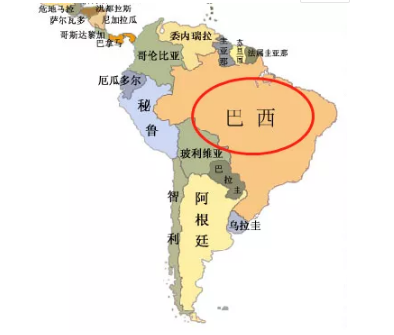
The balance of Brazilian coffee
Due to the low altitude of Brazil in Central and South American countries, and the lack of micro-climate, the coffee beans planted under various conditions are sour but soft enough, nutty, sweet and mellow, and so on. But some coffee lovers will find fault with the acidity of Brazilian coffee beans, feeling that they are too mediocre and not distinctive enough. In fact, it also shows that coffee culture is like this, both positive and negative, and the fame of a type of coffee bean can withstand praise and criticism.
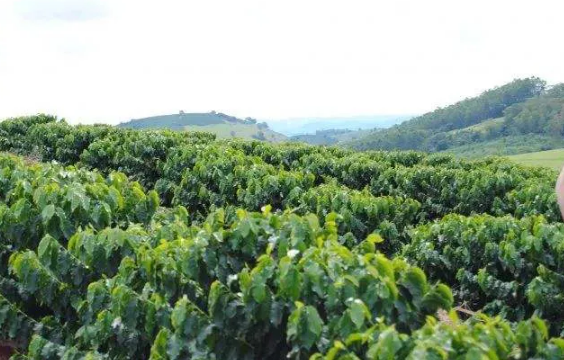
Brazilian producing area
Brazil has 21 states and 17 states produce coffee, but seven of them produce the most, accounting for 98% of the country's total output. They are:
State of Sao Paulo (Mogiana, Centro-Oeste)
State of Parana (Norte Pionerio do Paran á)
Bahia State (Planaltoda Bahia, Cerrado da Bahia, Atlantico Baiano)
Espiritu Santo (Montanhas do Esp í rito Santo, Conilon Capixaba)
Minas Gerais State (Sul de Minas, Cerrado Mineiro, Chapada de Minas, Matas de Minas)
Rond ô nia
Rio de Janeiro State (Rio de Janeiro)
Brazilian coffee varieties
Bourbon species classification: red bourbon, yellow bourbon, orange bourbon, pink bourbon, blue bourbon
Bourbon coffee is the same old variety as Typica coffee, which belongs to Arabica coffee. Bourbon coffee was originally planted in Reunion, which was also known as le Bourbon before 1789, so the coffee variety was also named "bourbon".
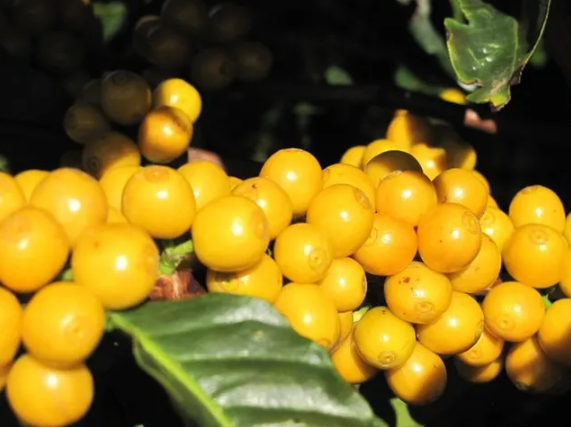
As an old variety of coffee beans, unlike tin card coffee, bourbon has wider leaves and denser growth, and its yield is 30% higher than that of tin card coffee, and the beans are shorter and round. the berries are sour, the cream and flavor are obvious, the sour flavor is strong, and the fruit acid taste is obvious, but the same problem is poor disease resistance. After the red bourbon general coffee tree blossoms and bears fruit, the color change of coffee fruit is: green > turn yellowish > turn slightly orange > turn mature red > turn more ripe dark red, so some people say that "red bourbon species" is a coffee tree species introduced to Brazil through Campinas in the south around 1860, and it is also a typical coffee tree species.
Generally speaking, bourbon is a coffee tree that belongs to a branch of Arabica species, generally bearing red fruit, called red bourbon, in addition to yellow bourbon, orange bourbon, yellow bourbon relatively low yield, but better quality.
Brazilian treatment-half-sun treatment
Half-sun treatment is also called peeling and tanning. Unlike traditional sun treatment, half-sun removes the skin and flesh of coffee berries, which can control the fermentation degree of pectin coffee beans after peeling and peeling. The traditional sun is the sun with peel and pulp, so the fermentation degree of pectin can not be seen. The half-sun treatment is between the sun treatment and the water washing treatment, but there is no "pool fermentation and water washing" process of the water washing treatment, but it is directly exposed to the sun. Although the method seems to be similar, without the step of fermentation, the flavor of coffee beans is completely different.
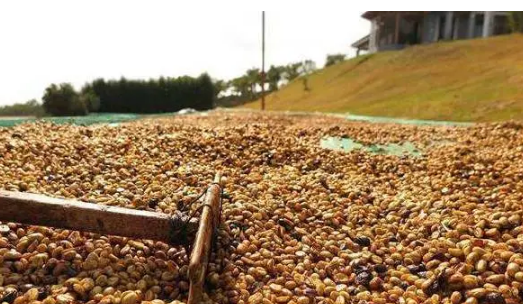
1. First put the coffee fruit into a large water tank, remove the floating fruit, and then put the sunken fruit into the pulp sieving machine to remove the pulp. It is more important to get rid of the immature fruit and, more importantly, to let the coffee beans dry in the sun not with pulp, but only with a layer of pectin, which is more helpful to control the subsequent fermentation process.
two。 After the peel and pulp of the fruit is removed, you can see the yellow pectin, and the coffee fruit with pectin is exposed to the sun (after the pulp of the coffee bean is removed, there is a layer of sticky jelly called pectin).
3. After drying the beans with a moisture content of 10.5% Murray, 12%, the shells are removed.
4. Finally, polishing and polishing are carried out before the beans are bagged and exported.
Characteristics of half-sun treatment
1. It is suitable for a large number of commercial operations (this method is often used in Brazil). The treatment of half-sun is relatively simple and easy to operate, which can save water and protect the environment.
two。 In the process of removing the pulp of coffee peel, the ripe pulp will be removed easily, and the immature green fruit skin is not easy to dispose of, so a second screening can be carried out to filter the immature fruit and unify the maturity of coffee fruit. Compared with the sun drying method, the cleanliness and maturity of the selected coffee fruit will be improved, resulting in a more uniform taste of coffee.
3. The drying time will be shortened, time cost will be saved, and more added value will be added.
4. The maturity is relatively consistent, which is more conducive to preserving and unifying the raw bean quality of coffee.
Disadvantages of half-sun method:
1. The drying process is vulnerable to pollution and mildew.
two。 The whole process needs to be closely watched and constantly turned over.
3. Speed up the drying to avoid bad fermentation smell.
Brazilian coffee bean grade
1. Defect rate classification: from high to low No2- No8 seven levels, every 300g how many defective beans to distinguish the grade, using the deduction system, deduction below 4 can be classified as No2 (No1 without a defective bean is rare and can not maintain a certain supply).
two。 Classification according to the size of legume: the highest grade is 17 mesh and 18 mesh.
3. Cup test quality classification: from high to low, Fine Cup, Fine, Good Cup, Fair Cup, Poor Cup, Bad Cup. FC (Fine Cup) and GC (Good Cup) are more common.
4. Flavor classification: from high to low, Strictly Soft is very supple, Soft is very supple, Softish is a little supple, Hardish is not palatable, Rioy iodine choking taste.
Front Street Coffee Brazil represents Coffee beans-- Brazilian Queen Manor Coffee
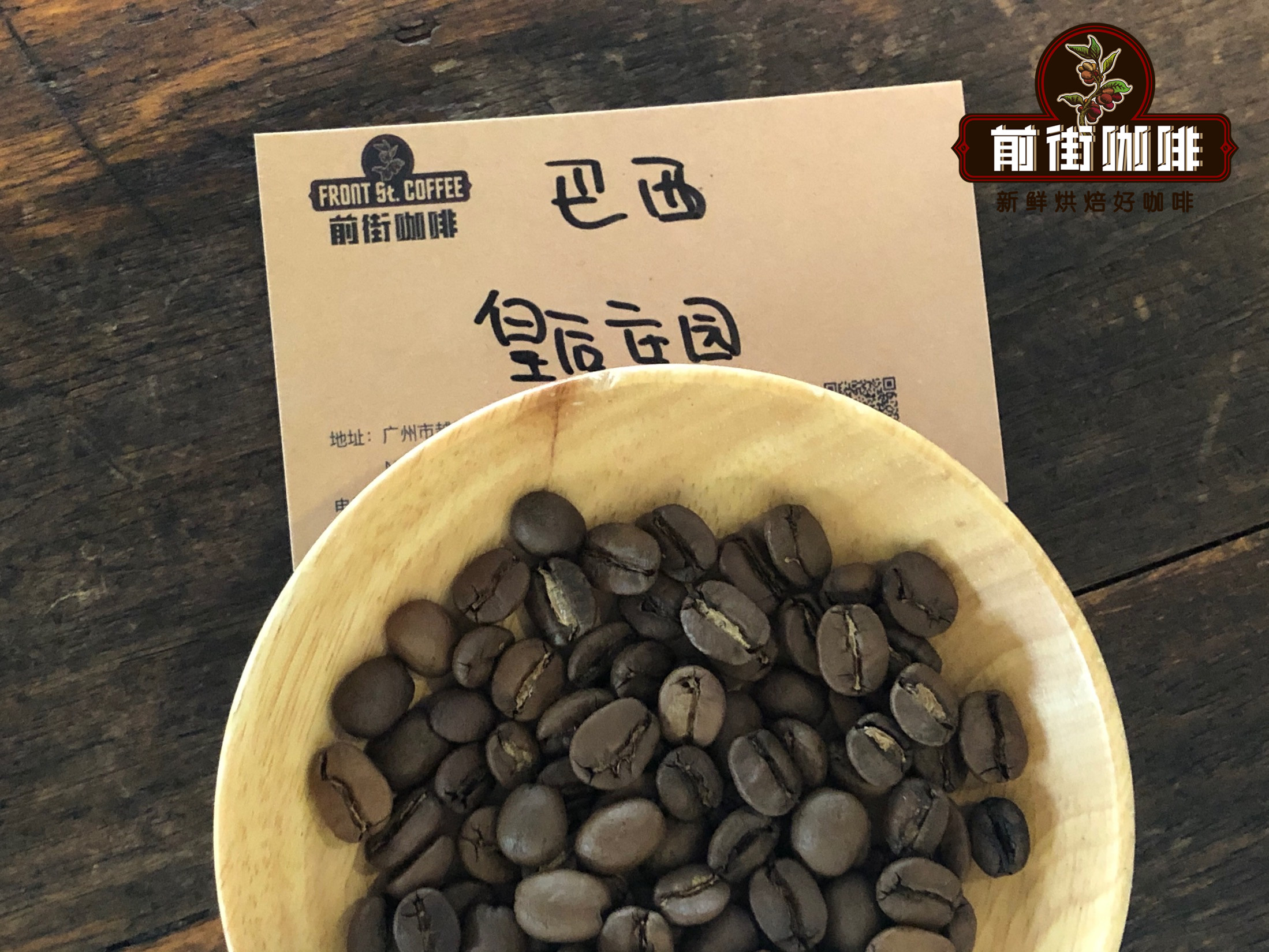
Country: Brazil
Producing area: Morgiana
Altitude: 1400Muth1950m
Variety: yellow bourbon
Treatment: half-sun treatment
Baking suggestion
This bean has a low moisture content and a solid texture, which makes the beans have a strong ability to absorb heat, because the baking time should be controlled steadily and should not be too hasty. In order to make its flavor good and bring out its aroma, medium baking is used.
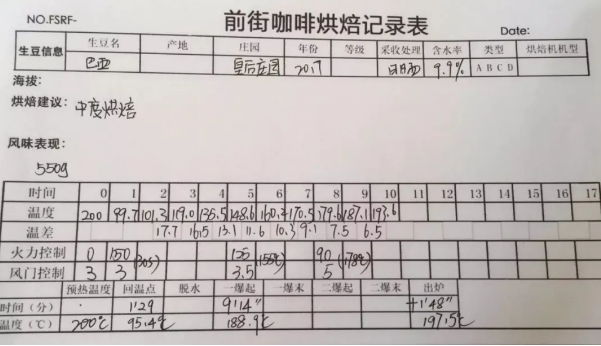
Machine: Yang family 800N, raw bean 550g
Input bean temperature: 200℃
Tipping point: 9 hours 39 percent 14 ", 188.9 ℃
After one explosion, the development was 1: 48 ", and 197.5 ℃ was released.
Cup test report
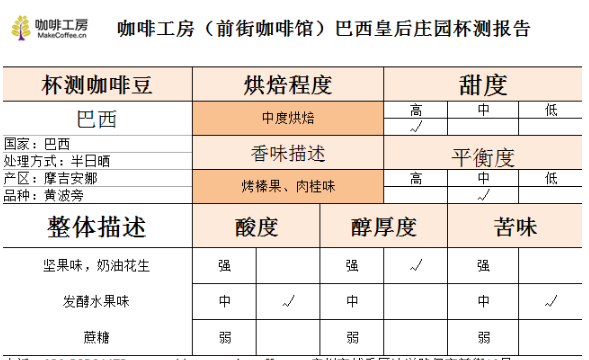
The suggestion of cooking in Qianjie
Filter cup: KONO
Water temperature: 88 ℃
Amount of powder: 15g
Powder / water ratio: 1:15
Degree of grinding: sugar size (BG#6w)
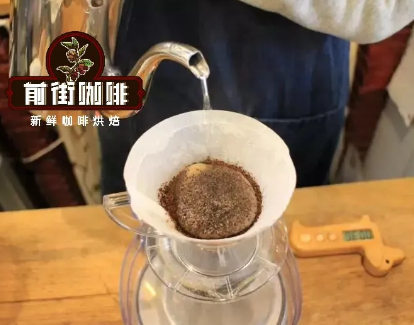
Flushing and boiling technique-- segmented extraction
Steam with 30 grams of water for 30 seconds, small water flow around the circle to 125 grams for sectional injection, water level drop is about to expose the powder bed, continue to inject water to 225 grams to stop injection, and so on when the water level drop is about to expose the powder bed, remove the filter cup, (steaming starts timing) the extraction time is 2 minutes 39 percent 00 ".
Flavor description: the taste has obvious sweetness, a hint of lemon aroma, rich nutty flavor, dark chocolate flavor in the latter part, and a round overall feeling. It is a coffee bean that can represent the overall characteristics of Brazilian coffee. At the same time, it can reflect its own unique liveliness.
For more boutique coffee beans, please add private Qianjie coffee on Wechat. WeChat account: kaixinguoguo0925
Important Notice :
前街咖啡 FrontStreet Coffee has moved to new addredd:
FrontStreet Coffee Address: 315,Donghua East Road,GuangZhou
Tel:020 38364473
- Prev

The relationship between extraction rate and concentration How much coffee concentration is appropriate? What happens when coffee is too strong?
Professional coffee knowledge exchange More coffee bean information Please pay attention to coffee workshop (Weixin Official Accounts cafe_style) What is the gold cup extraction law? How to adjust coffee extraction rate and coffee strength? Baristas often misunderstand. To understand gold cup extraction, first understand the concept of coffee extraction rate and concentration. Coffee extraction rate: the weight of dissolved coffee components
- Next
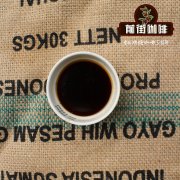
The difference between sun-cured coffee and half-sun coffee what's the taste of sun-cured coffee?
Professional coffee knowledge exchange more coffee bean information Please follow the coffee workshop (Wechat official account cafe_style) individual coffee has become increasingly popular in recent years, and more and more people will make their own coffee at home, while choosing and buying coffee beans, they always see confusing terms such as washing, sun drying, honey treatment and other confusing terms on the packaging, these different treatment methods
Related
- What is the meaning of lactic acid fermentation with coffee bean treatment?
- How to judge the state of foam by sound?
- How does the latte pull out the unicorn pattern? Come to get for a little trick to improve the flower pull!
- Will flower pulling affect the taste of the latte?
- Do you know the history of coffee?
- The difference between honey treatment and sun washing what is raisin honey treatment?
- What kind of milk can a novice use to make coffee foam to keep the foam longer? The correct method and skills of milking tutorial sharing
- Why do washed coffee beans taste sour? Flavor characteristics of washed Coffee
- Introduction to the skill of how to practice the size and height of water injection around the circle of hand-brewed coffee
- How do beginners practice coffee flower drawing from scratch?

